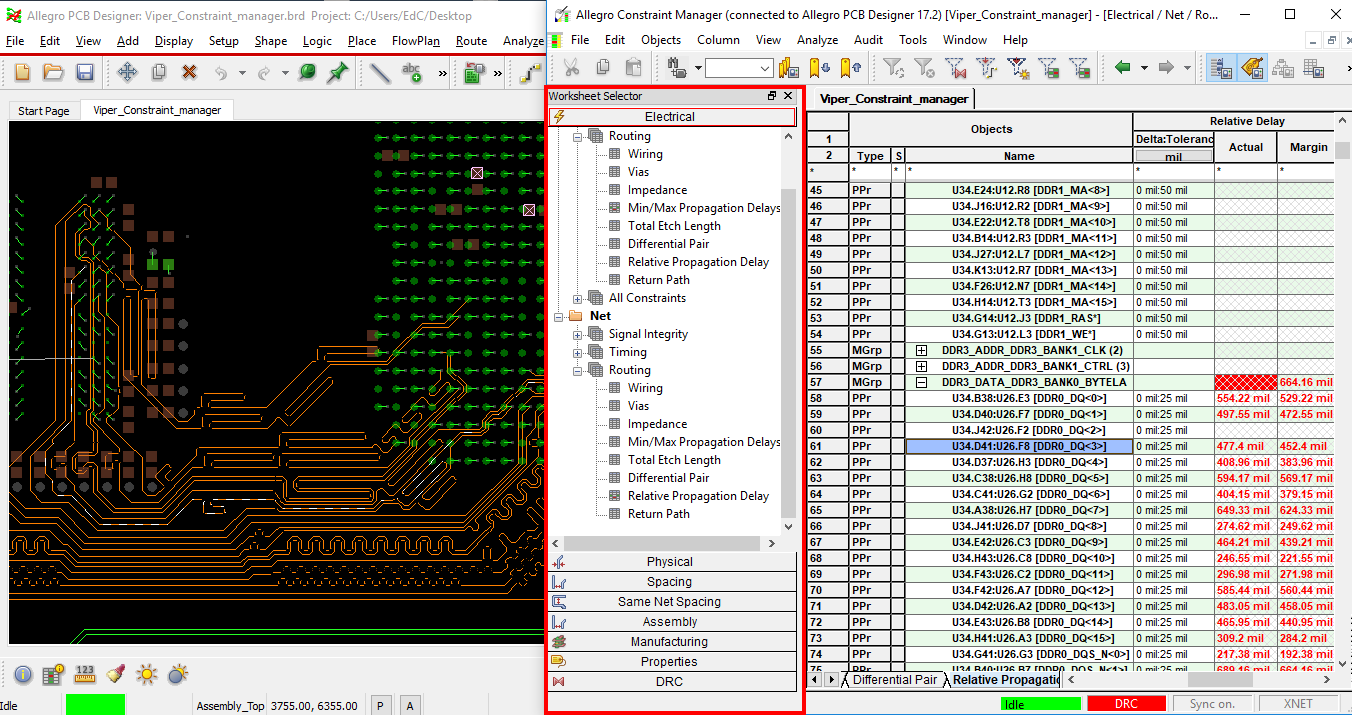
In a previous blog post, we discussed several reasons why adopting a constraint-driven approach to PCB design can save you hours (or even days) by helping you to prevent design mistakes. A sound constraint management design process helps to foster a correct-by-design approach, reduces time-to-market, and ultimately optimizes the design process—eliminating the undefined, error-prone methods of the past.
To reap these benefits, it is important to have a constraint management system that can keep up with your growing design needs. Understanding what to look for when assessing various offerings is essential, so be sure to ask yourself the following questions in looking for a constraint management system:
1. Does the system understand engineering rules required for layout and manufacturing? Can it pull rules from multiple sources?
A robust constraint management system will be unified and integrated into the schematic and layout editors with cross-probing including:
- Integrated graphical topology-driven constraint definition, simulation, and application
- Length or time-based constraints
- Full suite of electrical constraints with custom formula capability
- Robust physical and spacing rules (class to class rules)
- Regions rules for spacing and physical constraints
- Same net DRCs for advanced technologies (HDI)
- Impedance rules (checking for nets crossing gaps in the planes or voids)
- Manufacturing rules
- Assembly rules
- Fabrication rules
- A robust stackup editor with board material and loss tangents
- Integrated field solvers and extraction
- Lossy frequency dependent transmission line pre/post route simulation and extractions
- Via modeling and extraction
2. Can the system easily communicate design intent amongst various team members?
Most constraints are known or discovered during the initial design creation—when the design is being captured in a schematic. It is therefore best to be able to define those constraints during the schematic phase. Then they need to be available during PCB layout, when most constraints are used. However, some constraints are determined, or adjusted, during layout, so those need to be documented as well and made available to those working on the schematic. This back-and-forth communication of constraints is the key to a successful project, especially as team-size grows.
3. Can the system check your design for errors and provide feedback in real-time?
The main idea behind setting constraints upfront is to help ensure the design is going to function as expected. So, it is important the system can alert the designer to any errors as they occur, so no progress is accidentally made based on bad design.
4. Is it flexible/easy-to-edit?
Who wants to replace one arduous task with another? Having a CMS that is flexible and easy to work with is essential to a successful implementation. The best CMS systems will allow designers to manage constraints directly within the CAD environment, allowing teams to get up and running quickly.
5. Are the embedded constraints and rules reusable amongst other designs?
While a team’s designs are not all the same, there might be some constraints or rules which can be applied to multiple designs (i.e., electrical rules). To save time and reduce errors, it is imperative that a CMS allows for the reuse of these assets.
Conclusion
When constraints are done in the beginning of the design process, designers can be confident knowing once the design phase is done, it will move through the other phases with fewer or no errors requiring redesign. A constraint management system that can check work in real-time, as the design process is executed, provides reduced risks and the peace of mind that once board routing starts, the constraints will keep the board designer from violating the rules set up front. Remember, while we cannot always plan for the unexpected, having a reliable constraint management system will leave you prepared should an issue arise.











